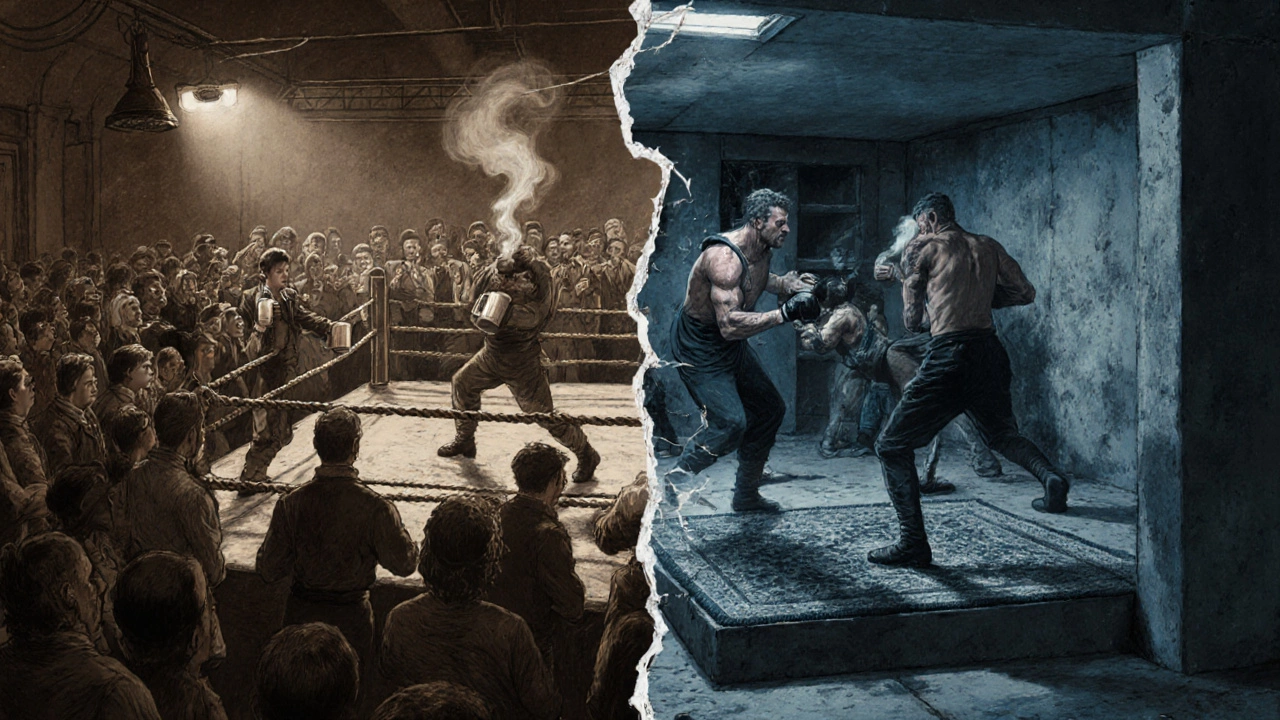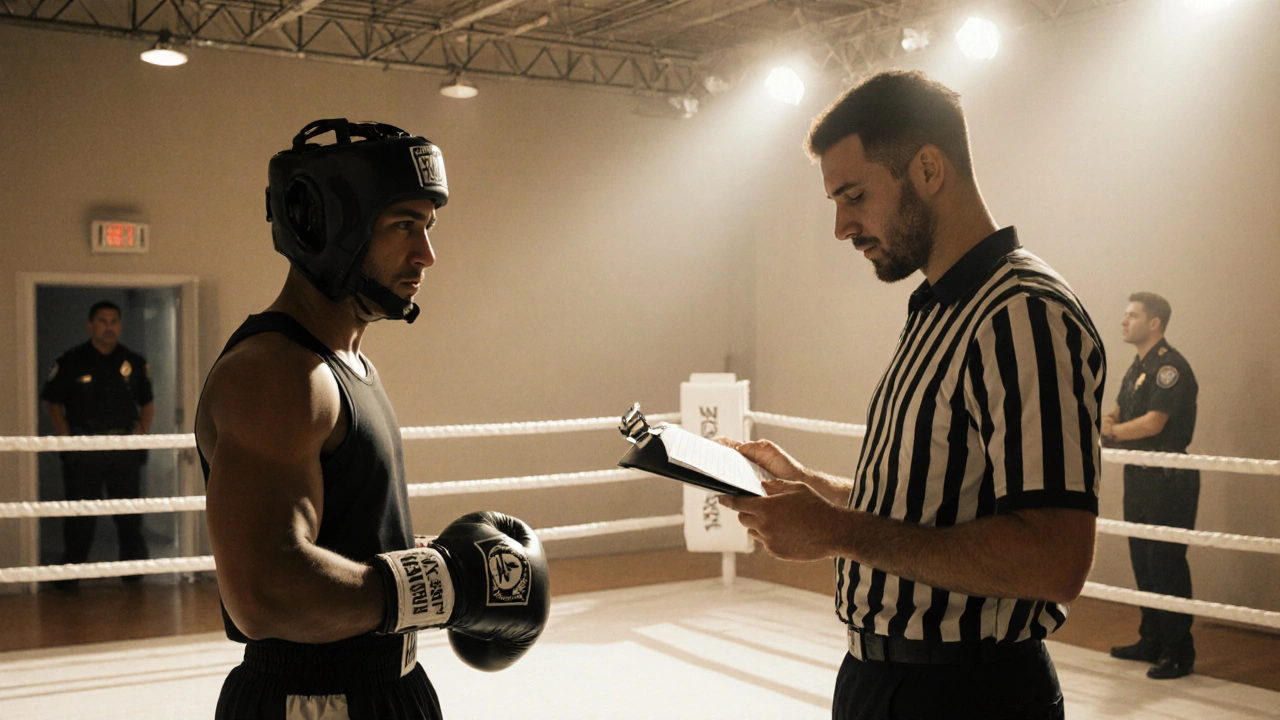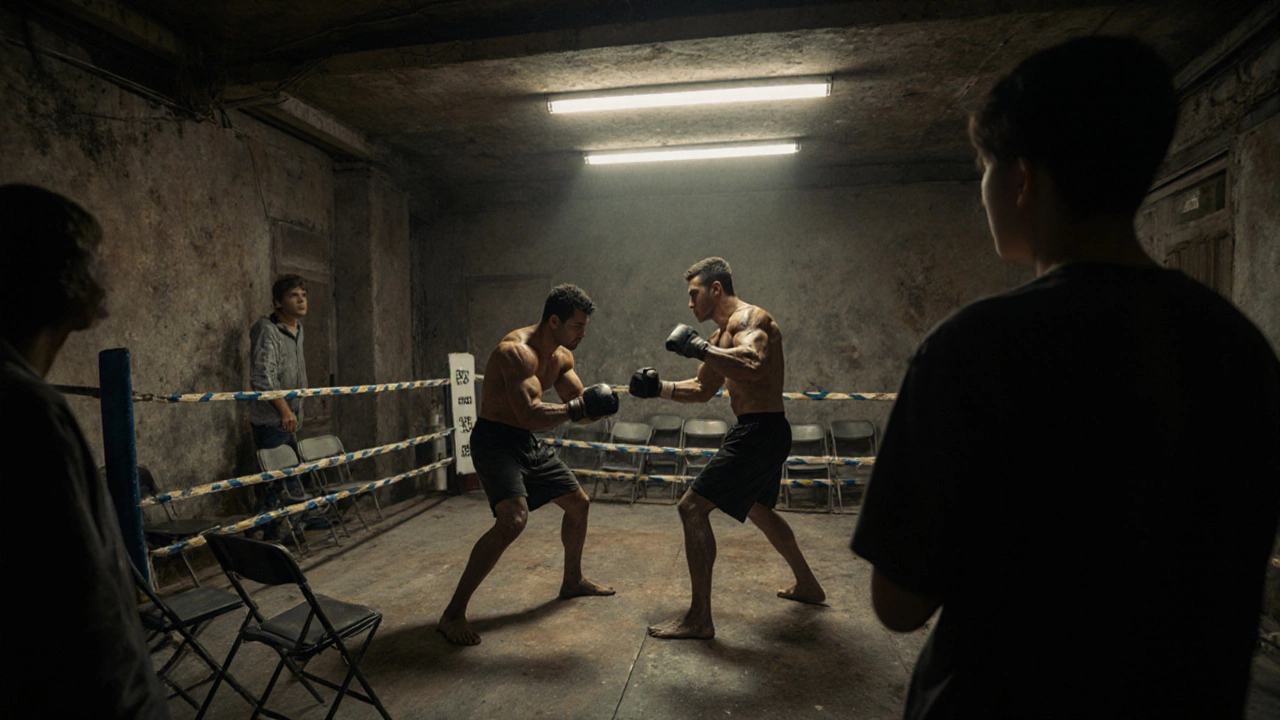Ever walked past a dimly lit gym and heard the thud of fists against flesh, wondering why there were no referees, no judges, and no official scores? That’s the world of illegal boxing - a shadow sport that skirts the law, trades safety for thrills, and carries a different name depending on where you ask.
What Do We Call Boxing That Operates Outside the Law?
In plain English, the activity is most often labeled as unsanctioned boxing - a term that simply means the bout has not been approved by any governing body. In the United States, especially during the 19th‑century boom, it was called prizefighting. Today, the phrase bare‑knuckle boxing is used when fighters forego gloves entirely, a style that often operates under the radar. In street culture and media, you’ll also hear the shorthand street boxing. All these labels point to the same legal reality: the event is not sanctioned by a recognized athletic commission.
How Does the Law Define and Regulate Boxing?
Almost every country has a boxing commission or similar authority that issues licenses, enforces safety standards, and oversees match outcomes. In the United States, the State Athletic Commission (often part of the Department of Health) holds that power. In Australia, the Combat Sports Act 2009 (VIC) gives Victorian Police the authority to intervene when a fight is staged without a licence.
Key legal criteria include:
- Obtaining a promoter licence.
- Ensuring fighters have medical clearance.
- Providing certified rings, gloves, and referees.
- Submitting official bout results to the commission.
If any of these steps are missing, the bout falls into the illegal category.
Historical Roots: From Prizefighting to Modern Bare‑Knuckle Events
Prizefighting surged in popularity in England during the early 1800s. The London Prize Ring Rules, drafted in 1838, were the first codified set of rules for a sport that was otherwise chaotic. When the Marquess of Queensberry Rules arrived in 1867, they introduced gloves and three‑minute rounds, ushering in modern boxing.
Despite the new rules, underground bouts persisted. In the United States during Prohibition, illegal fights often doubled as gambling dens. In Australia’s 1920s, “boxing clubs” operating without a licence attracted hundreds of spectators, only to be shut down by police raids.
Fast forward to the 2020s: a resurgence of bare‑knuckle events has sparked debate. While the Bare Knuckle Fighting Championship (BKFC) secured a licence in Nevada, many similar events still skirt the law, especially in jurisdictions where the sport hasn’t been formally recognised.
Key Differences Between Legal and Illegal Boxing
| Aspect | Sanctioned (Legal) | Unsanctioned (Illegal) |
|---|---|---|
| Governance | State or national boxing commission | None or informal gang/club |
| Safety equipment | Approved gloves, headgear (amateur), medical staff | Often no gloves or sub‑standard gear |
| Medical oversight | Pre‑fight exams, ringside doctor | Rarely any medical checks |
| Legal consequences | Fines for minor infractions, civil liability | Criminal charges, confiscation of equipment |
| Broadcast rights | Licensed TV/streaming deals | Often streamed illegally or not at all |

Health Risks Unique to Unsanctioned Fights
When you remove the safeguards of a licensed bout, the danger curve spikes dramatically. A 2023 Australian study of 127 emergency‑room admissions after underground fights found:
- 71% sustained facial fractures.
- 38% suffered concussions that required hospital observation.
- 12% experienced severe internal bleeding due to broken ribs.
Without a ringside physician, a fighter can walk away with a subtle brain injury that only surfaces weeks later. Unlike sanctioned events, there’s no mandatory post‑fight neurological testing, meaning long‑term damage often goes undetected.
How to Spot an Illegal Boxing Event
If you’re curious-or worried-about a potential illegal bout, here are five tell‑tale signs:
- No advertised promoter licence. Legitimate fights always list a licence number on flyers.
- Venue lacks a proper ring. You’ll often see a carpeted area, a makeshift wooden platform, or even a concrete floor.
- Absence of referees or certified judges. The “ref” may be a friend of the fighters.
- No medical personnel. No ambulance, no medical bags, nothing.
- Hidden or cash‑only ticket sales. Organisers rely on word‑of‑mouth and often operate after dark.
These clues can help law‑enforcement or community members intervene before serious injury occurs.
Legal Repercussions Across Major Jurisdictions
Each country treats unsanctioned boxing slightly differently, but penalties generally include:
- Australia: Under the Crimes Act 1958 (VIC), participants can face up to 2 years imprisonment and $10,000 fines.
- United States: Most states classify an illegal bout as a misdemeanor, carrying up to $5,000 in fines and 1‑year jail time. In some states, eg. New York, it can be elevated to a felony if injuries exceed $10,000 in medical costs.
- United Kingdom: The Sporting Events Act 1998 treats unlicensed fights as “unlawful sporting events,” punishable by up to £5,000 fines.
Organisers also risk civil lawsuits if a participant sues for negligence. Even spectators can be charged for aiding and abetting a prohibited sporting event.

Why Some Fighters Still Choose the Underground Route
Money, exposure, and the thrill of raw combat are the primary drivers. In 2024, a report from the International Boxing Research Organization (IBRO) noted that 27% of unsanctioned fighters cited “higher immediate payouts” than they could earn in amateur circuits. Additionally, a lack of opportunities in certain regions-especially rural areas with few licensed gyms-pushes athletes toward illicit bouts.
However, the upside often evaporates quickly. Injuries end careers, legal trouble hampers future employment, and the stigma can block a transition to legitimate competition.
Moving from the Underground to a Licensed Career
If you or someone you know is involved in illegal boxing, the pathway to legitimacy starts with a medical clearance and a clean legal record. Contact your local boxing club or the national governing body (e.g., Boxing Australia). They can guide you through the licensing process, which typically involves:
- Submitting a background check.
- Completing an approved training program.
- Undergoing a pre‑competition medical exam.
- Obtaining a promoter licence if you plan to organise fights.
Making the switch not only protects your health but also opens doors to sponsorships, televised bouts, and long‑term career stability.
Quick Checklist for Anyone Curious About Illegal Boxing
- Identify the event’s licensing status.
- Look for professional safety equipment and medical staff.
- Check local laws: most regions criminalise unlicensed bouts.
- Consider the long‑term health implications.
- If you’re a fighter, pursue a sanctioned licence to safeguard your future.
Frequently Asked Questions
What is the official term for boxing without a licence?
The sport is most commonly called unsanctioned boxing. Other historical terms include prizefighting and the modern bare‑knuckle boxing when gloves are omitted.
Is bare‑knuckle boxing always illegal?
Not always. In the US, the Bare Knuckle Fighting Championship (BKFC) operates under a state licence in Nevada and a few other states. However, many smaller events lack that licensing, making them illegal.
What penalties can organisers face in Australia?
Under the Combat Sports Act 2009 (VIC), organisers can be fined up to $10,000 and sentenced to two years imprisonment. Police can also seize equipment and shut down the venue.
How do medical risks differ between legal and illegal fights?
Legal bouts require pre‑fight medical exams and ringside doctors ready to intervene. Illegal fights often skip these safeguards, resulting in higher rates of facial fractures, concussions, and internal injuries, as documented in a 2023 Australian emergency‑room study.
Can a fighter transition from illegal to sanctioned boxing?
Yes, but the athlete must first clear any legal issues, obtain a medical clearance, and apply for a licence through the national governing body. Many former underground fighters have successfully moved into professional ranks after meeting these criteria.
